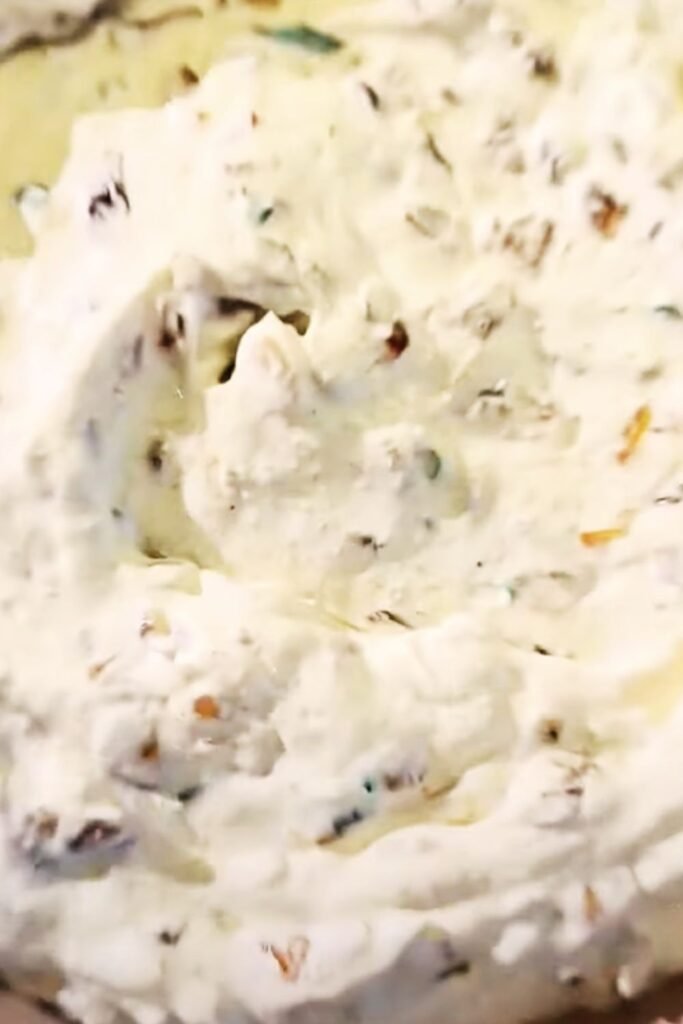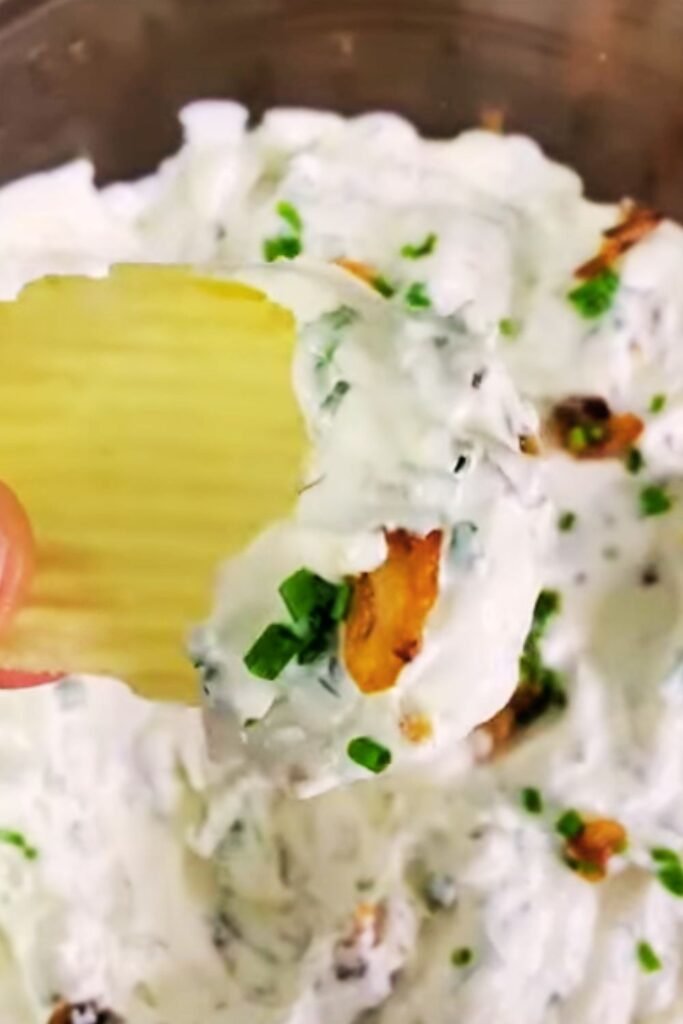There’s something magical about French onion dip that transforms any gathering into a memorable occasion. I’ve been perfecting this recipe for years, and I can confidently say that once you taste homemade French onion dip, you’ll never go back to the store-bought packets. This creamy, savory delight combines the deep, caramelized sweetness of onions with the rich tanginess of sour cream and cream cheese, creating a flavor profile that’s both sophisticated and comforting.
What Makes French Onion Dip Special
French onion dip represents the perfect marriage of French culinary technique with American convenience food culture. The foundation lies in properly caramelized onions, which undergo a slow transformation from sharp and pungent to sweet and golden. This process, known as the Maillard reaction, develops complex flavors that can’t be rushed or replicated with artificial seasonings.
Key Flavor Components:
- Caramelized Onions: Sweet, complex, and deeply flavored
- Dairy Base: Creamy texture from sour cream and cream cheese
- Herbs: Fresh chives and parsley for brightness
- Seasonings: Garlic, salt, and pepper for depth
Essential Ingredients Breakdown
Creating exceptional French onion dip requires understanding each ingredient’s role in the final product. I’ve experimented with countless variations, and these components deliver the most balanced and flavorful results.
Primary Ingredients
| Ingredient | Amount | Purpose | Substitution Options |
|---|---|---|---|
| Yellow Onions | 3 large | Base flavor, sweetness when caramelized | Sweet onions, white onions |
| Sour Cream | 16 oz | Tangy creaminess, main body | Greek yogurt (adjust consistency) |
| Cream Cheese | 8 oz | Rich texture, stability | Mascarpone, Neufchâtel |
| Butter | 3 tbsp | Caramelization medium | Olive oil, ghee |
| Fresh Chives | 1/4 cup | Fresh, mild onion flavor | Green onion tops, dried chives |
| Fresh Parsley | 2 tbsp | Brightness, color | Dried parsley (use less) |
| Garlic | 2 cloves | Aromatic depth | Garlic powder (1/2 tsp) |
| Salt | 1 tsp | Flavor enhancement | Sea salt, kosher salt |
| Black Pepper | 1/2 tsp | Mild heat, complexity | White pepper |
Quality Considerations
The quality of your ingredients directly impacts the final product. I always choose full-fat sour cream and cream cheese for the richest texture. Low-fat alternatives can result in a watery consistency that doesn’t hold up well as a dip. Fresh herbs make an enormous difference compared to dried alternatives, providing vibrant color and clean, bright flavors that complement the rich onions.
Step-by-Step Preparation Guide

Phase 1: Caramelizing the Onions
The heart of exceptional French onion dip lies in properly caramelized onions. This process requires patience but rewards you with incredible depth of flavor.
- Slice the onions: Cut 3 large yellow onions into thin, uniform slices. Consistent thickness ensures even cooking.
- Heat the pan: Use a heavy-bottomed skillet or Dutch oven over medium heat. Add 3 tablespoons of butter and let it melt completely.
- Add onions: Place sliced onions in the pan, stirring to coat with butter. The pan should be full but not overcrowded.
- Initial cooking: Cook for 10-15 minutes, stirring occasionally, until onions begin to soften and release moisture.
- Reduce heat: Lower heat to medium-low. This is crucial for proper caramelization without burning.
- Slow caramelization: Continue cooking for 30-45 minutes, stirring every 5-10 minutes. Onions will gradually turn golden brown and develop a sweet aroma.
- Final stage: In the last 10 minutes, add minced garlic and cook until fragrant.
- Cool completely: Remove from heat and let cool to room temperature before incorporating into the dip.
Phase 2: Preparing the Dairy Base
While onions cool, prepare the creamy foundation of your dip.
- Soften cream cheese: Remove cream cheese from refrigerator 30 minutes before use, or soften in microwave for 20-30 seconds.
- Combine dairy: In a large mixing bowl, blend softened cream cheese with sour cream until smooth and lump-free.
- Season base: Add salt and black pepper to the dairy mixture, adjusting to taste.
Phase 3: Final Assembly
- Incorporate onions: Fold cooled caramelized onions into the dairy base, ensuring even distribution.
- Add fresh herbs: Gently mix in chopped chives and parsley, reserving some for garnish.
- Taste and adjust: Sample the dip and adjust seasonings as needed. The flavor should be balanced between sweet, tangy, and savory.
- Chill: Refrigerate for at least 2 hours, preferably overnight, to allow flavors to meld.
Nutritional Information and Health Benefits
Understanding the nutritional profile of French onion dip helps you enjoy it mindfully as part of a balanced diet.
Nutritional Breakdown (Per 2 tablespoon serving)
| Nutrient | Amount | % Daily Value |
|---|---|---|
| Calories | 85 | 4% |
| Total Fat | 8g | 10% |
| Saturated Fat | 5g | 25% |
| Cholesterol | 25mg | 8% |
| Sodium | 125mg | 5% |
| Carbohydrates | 3g | 1% |
| Dietary Fiber | 0.5g | 2% |
| Sugars | 2g | – |
| Protein | 2g | 4% |
| Vitamin A | 180 IU | 4% |
| Calcium | 45mg | 4% |
Health Benefits
Despite being an indulgent treat, French onion dip offers some nutritional benefits:
Onions provide:
- Antioxidants like quercetin
- Prebiotic fibers for digestive health
- Vitamin C and B vitamins
- Anti-inflammatory compounds
Dairy components contribute:
- Protein for satiety
- Calcium for bone health
- Probiotics from cultured sour cream
- Vitamin B12 and riboflavin
Serving Suggestions and Pairings

French onion dip’s versatility makes it perfect for various occasions and pairings. I’ve discovered that the key to exceptional presentation lies in choosing complementary textures and flavors that enhance rather than compete with the dip’s rich profile.
Classic Dippers
Potato Chips: The traditional choice, offering satisfying crunch and salt that balances the dip’s richness. Kettle-cooked varieties provide extra texture.
Fresh Vegetables: Create a colorful crudité platter with:
- Bell pepper strips (red, yellow, orange)
- Carrot sticks
- Celery stalks
- Cherry tomatoes
- Cucumber rounds
- Sugar snap peas
Bread Options:
- Crusty French bread slices
- Pita chips
- Bagel chips
- Sourdough crackers
Creative Applications
Beyond traditional dipping, French onion dip serves as an excellent ingredient in other dishes:
Baked Potato Topping: Dollop onto hot baked potatoes with fresh chives Sandwich Spread: Use as a flavorful condiment for roast beef or turkey sandwiches Stuffed Mushrooms: Fill large mushroom caps with the dip and bake until golden Flatbread Base: Spread on naan or pizza dough before adding toppings
Storage and Make-Ahead Tips
Proper storage ensures your French onion dip maintains its quality and food safety standards.
Refrigerator Storage
Store homemade French onion dip in an airtight container in the refrigerator for up to 5 days. The flavors actually improve after the first day as ingredients meld together. Always use clean utensils when serving to prevent contamination.
Make-Ahead Strategy
French onion dip is an excellent make-ahead dish. I recommend preparing it at least 4 hours before serving, though overnight chilling produces the best flavor development. The caramelized onions can be prepared up to 3 days in advance and stored separately before combining with the dairy base.
Freezing Considerations
While technically possible, I don’t recommend freezing French onion dip. The dairy base can separate upon thawing, resulting in an undesirable texture. If you must freeze, expect some texture changes and plan to stir vigorously or blend briefly after thawing.
Troubleshooting Common Issues

Even experienced cooks encounter challenges when making French onion dip. Here are solutions to the most common problems I’ve encountered:
Texture Problems
Too Thin:
- Cause: Excess moisture from onions or low-fat dairy products
- Solution: Drain caramelized onions thoroughly; use full-fat ingredients; add more cream cheese
Too Thick:
- Cause: Over-incorporation of cream cheese or insufficient sour cream
- Solution: Gradually thin with additional sour cream or small amount of milk
Lumpy Consistency:
- Cause: Cold cream cheese not properly softened
- Solution: Ensure cream cheese reaches room temperature; blend thoroughly
Flavor Issues
Bland Taste:
- Cause: Under-seasoned or insufficient caramelization
- Solution: Adjust salt levels; ensure onions are properly caramelized
Too Salty:
- Cause: Over-seasoning or salty chip residue
- Solution: Add more sour cream to dilute; serve with unsalted crackers
Burnt Onion Flavor:
- Cause: Too high heat during caramelization
- Solution: Start over with fresh onions; maintain medium-low heat
Variations and Flavor Enhancements
Herb Variations
Mediterranean Style: Add fresh oregano, basil, and a touch of lemon zest Garden Fresh: Incorporate fresh dill, tarragon, and finely chopped green onions Spicy Version: Include finely minced jalapeños or a dash of hot sauce
Gourmet Additions
Caramelized Shallots: Replace half the onions with shallots for a more refined flavor Roasted Garlic: Use roasted garlic cloves instead of raw for mellower, sweeter notes Bacon Bits: Fold in crispy bacon pieces for added richness and texture Gruyère Cheese: Add finely grated Gruyère for authentic French onion soup flavors
Frequently Asked Questions
Q: Can I use sweet onions instead of yellow onions? A: Absolutely! Sweet onions like Vidalia or Walla Walla work beautifully and require slightly less cooking time to caramelize. They’ll produce a milder, sweeter final product.
Q: How do I know when my onions are properly caramelized? A: Properly caramelized onions should be deep golden brown, very soft, and smell sweet rather than sharp. They should have reduced significantly in volume and appear almost jam-like in consistency.
Q: Can I make this dip dairy-free? A: Yes, substitute the sour cream with coconut cream or cashew-based sour cream alternatives, and use dairy-free cream cheese. The texture may be slightly different, but the flavor remains delicious.
Q: Why does my dip taste better the next day? A: Like many dishes with multiple flavor components, French onion dip benefits from time for the ingredients to meld. The herbs infuse throughout, and the onion flavors distribute more evenly through the dairy base.
Q: Can I double this recipe for a large party? A: Certainly! This recipe scales well. Just ensure you have a large enough pan for caramelizing the increased amount of onions, and you may need to work in batches.
Q: What’s the best way to reheat leftover dip? A: French onion dip is typically served cold, but if you prefer it slightly warmed, heat gently in a slow cooker on low heat, stirring occasionally. Avoid microwave heating, which can cause the dairy to separate.
Q: How can I make this dip lighter without sacrificing flavor? A: Replace half the sour cream with plain Greek yogurt, and use reduced-fat cream cheese. The flavor remains rich while reducing overall calories and fat content.
Q: Can I prepare just the caramelized onions in advance? A: Yes! Caramelized onions can be prepared up to one week in advance and stored in the refrigerator. They also freeze well for up to three months, making them perfect for meal prep.
French onion dip represents more than just an appetizer; it’s a celebration of simple ingredients transformed through technique and patience. The slow caramelization of onions creates complex flavors that elevate this humble dip into something truly special. Whether you’re hosting a casual gathering or preparing for a special occasion, homemade French onion dip will impress your guests and create lasting memories around good food and great company.
The beauty of this recipe lies in its adaptability and the satisfaction of creating something extraordinary from ordinary ingredients. Take your time with the caramelization process, use quality ingredients, and don’t be afraid to adjust seasonings to your taste preferences. With practice, you’ll develop your own signature version that becomes a requested favorite at every gathering.